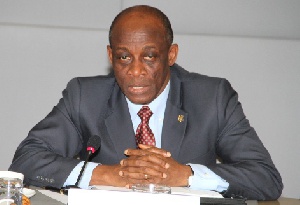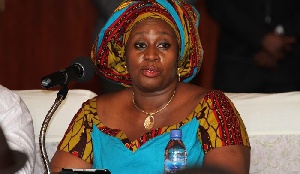Business News of Monday, 26 September 2016
Source: thefinderonline.com
2017 Debt Servicing to hit GH¢17.5bn
Debt servicing in 2017 is expected to hit GH¢17.55 billion, representing more than 25% of the total projected resource envelope for next year.
It comprises GH¢11.1 billion (GH¢11,178,409,057) for interest payments and GH¢6.3 billion (GH¢6,371,656,454) for loan repayments.
The high-interest payment is a reflection of unsustainably high public debt levels.
Economic analysts have said the real effects of the high levels of borrowing undertaken in the last seven years has resulted in the magnitude of interest payments and resources, which should have gone into vital sectors such as infrastructural development and social services, would now be used to settle debt obligations.
The figures are contained in a government document prepared by the Ministry of Finance and titled “guidelines for the preparation of the 2017-2019 budget”. It is dated June 28, 2016.
GH¢6.6b for capital expenditure
Even though the total resource envelope - which is the total amount of money that government can spend for 2017 is estimated at GH¢56.6 billion
(GH¢56,689,811,909) - only GH¢6.6 billion (GH¢6,637,505,855) has been allocated to capital expenditure.
Some analysts say if other debt obligations are added, the government would have less than GH¢3 billion to spend in 2017.
GH¢41.9bn from domestic revenue
Out of this total resource envelope, domestic revenue is expected to yield GH¢41.9 billion (GH¢41,922,335,923), an indication that the balance of GH¢14.7 billion (GH¢14,767,475,986) is expected to come from external sources.
Debt servicing to consume half of domestic revenue
Therefore, debt service for amortisation and interest payments for domestic and external loans, which amounts GH¢17.55billion,is almost 50% of expected domestic revenue.
The high-interest payment is disturbing because it does not allow room for more capital expenditure.
Amortisation equals capital expenditure
As a sign of the country’s high debt, amortisation due in 2017 is GH¢6.3 billion (GH¢6,371,656,454), just some GH¢200 million less than capital expenditure.
Interest payment is twice capital expenditure
Interest payment on Ghana’s loans is expected to hit GH¢11.1billion in 2017 (GH¢11,178,409,057) - almost twice capital expenditure.
Grants to other government units
The amount allocated to interest payment is just about GH¢600 million less compared to the amount allocated for grants to other government units which comprises of the statutory funds - National Health Fund, Education Trust Fund, Road Fund, Petroleum Related Funds, District Assemblies Common Fund, Retention of Internally-generated funds (IGFs) andTransfer to GNPC from Oil Revenue – is expected to amount to GH¢11,768,985,779.
GH¢34bn for MDAs
The provisional resource envelope for MDAs in 2017 amounts to GH¢34billion(GH¢34,020,736,115).
Out of this amount,GH¢13.6billion(GH¢13,627,101,693) is from Government of Ghana (GOG) sources, GH¢3.9billion(GH¢3,987,485,112) is from IGF andGH¢2.7billion(GH¢2,779,047,617) is from Development Partner sources
GH¢15.6b is compensation for government employees
Out of this GH¢56,689,811,909, employees' compensation, including salaries and wages, will be allocated GH¢15.6 billion (GH¢15,604,905,129).
Other allocations
Other allocations in the 2017 budget forecast are Goods and Services - GH¢2billion (GH¢2,092,018,500), subsidies - GH¢50million (GH¢50,000,000), social benefits - GH¢83million (GH¢83,474,172), Non-Road Arrears - GH¢1.9billion (GH¢1,903,252,629) and Tax RefundsGH¢999million (GH¢999,604,334)
However, there no allocation was made for Road Arrears.
Interest payments
From 2014 to date, interest payments have now incredibly exceeded infrastructure expenditure.
In 2015, interest payments amounted to more than GH¢9.6 billion.
This year, interest payment has been pegged atGH¢10.5billion.
New Debt Ceilings
“MDAs are to note that, there is a new debt ceiling of the Government of Ghana for the annual budget.
“This forms part of the Extended Credit Facility with the International Monetary Fund”, document revealed.











